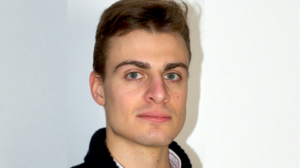Dr. Alberto Ferrari
Physics

“Surface Segregation in High Entropy Alloys”
The efficient production of sustainable energy is one of the most important challenges of the next decade. Fuel cells, with higher energy density than state-of-the-art batteries, are emerging devices for the production and storage of green energy, but fundamental challenges pose several concerns on the development of this technology. The main issues are related to the cost and long-term stability of the catalysts, vital components of the fuel cells that accelerate the rate of the chemical reactions that take place in the fuel cells.
Very recently, new catalyst materials based on multicomponent metallic alloys, the so-called high entropy alloys, have been proposed. The catalytic activity of these new alloys is unexpectedly high, potentially paving the way for cheaper and more efficient fuel cells. Despite this important discovery, very little is known about the structure of these materials at the atomic level and, most importantly, about the mechanisms that allow to speed-up chemical reactions so efficiently.
Since chemical reactions always take place at the interface between the reactants and the catalyst, it is crucial to investigate the surface of these materials. The aim of my Gateway project is to answer the fundamental question “How does the surface of high entropy alloys look like at the atomic level?” with first-principles computer simulations. I will use a technique called “Density Functional Theory” to analyze if all the component elements are present as a disordered mixture at the surface, or if certain elements are more favored than others (i.e. “segregate” at the surface, in our jargon). The understanding of the chemical composition and the arrangement of the atoms of different chemical species at the surface is a first step towards the comprehension of the mechanisms that rule the behavior of these complex materials under reactive conditions.
The ideal place to carry out this research is TU Delft, in the Netherlands. Besides being one of the top academic institutions in Europe, it hosts two of the greatest experts in high entropy alloys worldwide, Prof. M. Sluiter and Dr. Fritz Körmann, who will supervise me in this project. Furthermore, as my Gateway project is markedly interdisciplinary, I will be helped also by Dr. M. Todorova, from MPIE-Düsseldorf, a leading expert at an international level on surface chemistry.


